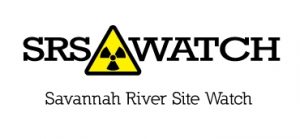Savannah River Site Watch https://srswatch.org/
https://srswatch.org/
Columbia, South Carolina USA For Immediate Release December 14, 2020
The powerful chairman of the House Armed Services Committee, Representation Adam Smith, has raised great doubt about the U.S. Department of Energy’s ability to pull off the project at the Savannah River Site (SRS) in South Carolina to produce plutonium “pits,” or cores, for nuclear warheads.
In an online presentation on December 11 with the Center for Strategic and International Studies, Rep. Smith (D-WA) expressed deep concern in the ability of the DOE’s National Nuclear Security Administration (NNSA) to pull off the project to convert the partially finished plutonium fuel (MOX) plant, halted in 2017, into the proposed Plutonium Bomb Plant (PBP) at SRS. The event featured Rep. Smith talking about nuclear weapons matters coming before Congress in 2021. The transcript of the event was released late in the afternoon of December 11.
The skepticism of Rep. Smith about pit production at SRS was based in part on his continued concern about NNSA’s role in the failed MOX project at SRS: “Because the thing that really sticks in my craw on this basic competency issue is the Savannah River Site and the MOX facility. OK, that is pretty close to white collar crime, all right?” The public interest group Savannah River Site Watch believes Congress should follow through and conduct investigations into the MOX debacle.
Smith’s comments on pit production at SRS were harsh and, noting the mismanaged construction of the MOX building, said “So I am highly skeptical that they’re going to be able to turn that building into an effective pit production facility – highly skeptical.” He reiterated skepticism in NNSA’s ability and said “I am highly skeptical of the level of competence within the NNSA.”
Concerning the potential monetary waste on the pit project at SRS, Rep. Smith recognized parochial financial interests near SRS pushing for the pit project at the site and said “But if they’re going to have that say, they’d better not use that say to take $6 billion and dump it down a rat hole in South Carolina. That’s what I would argue.”
An emailed question by Tom Clements, director of Savannah River Site Watch, was presented by the moderator to Rep. Smith during the audience Q&A session, triggering lengthy comments about pits. “The striking assessment of Representative Smith dramatically raises the pressure on the ill-conceived SRS plutonium pit plant and will set the tone for discussions on the controversial pit issue in the House Armed Services Committee in 2021,” said Clements.
In raising doubt about the ability of Los Alamos to make 30 pits per year and the negative implication of that on the goal of 80 pits per year, Rep. Smith said “And we got – then it turns out that we’re having a devil of a time making 30 pits a year. We’re not sure we’re going to hit that goal. So what’s our solution? We’re going to do 80 pits a year. I’m like, are you – (inaudible) – kidding me, OK?”
Los Alamos, which has not been able to produce its mandated 20 pits per year, is slated to make 30 or more pits per year by 2026 and SRS, which has zero pit experience and little recent experience handling plutonium, is being presented with the daunting challenge to produce 50 or more pits per year by 2030.
The House Armed Services Committee is the authorizing body for Department of Defense and Department of Energy programs, which are funded by the Appropriations Committees. Though budget requests are usually presented to Congress in early February, it is expected that the Fiscal Year 2022 budget request will be late next year due to a change in administrations.
It appears that for Fiscal Year 2021 that the Plutonium Bomb Plant at SRS has garnered $241 million. Pit funding will be closely scrutinized in next year’s budget process, as will the 80 pits-per-year goal.
Smith also voiced support for building “less nuclear weapons,” for a new Nuclear Posture Review and for a New Defense Strategy. He also stated support for a more “cost-effective approach” concerning nuclear weapons, for “adequate deterrence,” and questioned the need for the Ground Based Strategic Deterrent (GBSD or W87-1 warhead), for which a new plutonium pit might be made.
SRS Watch recently joined with Nuclear Watch New Mexico and Tri-Valley CAREs, all members of the Alliance for Nuclear Accountability (ANA), in protesting the NNSA’s formal decision to pursue the Plutonium Bomb Plant at SRS. The groups opposed the Record of Decision issued on the bomb plant on November 5 and reiterated that failure to prepare legally mandated environmental documents on pit production leaves NNSA open to the possibility of a lawsuit under the National Environmental Policy Act.
Notes: A Conversation with Rep. Adam Smith on Nuclear Modernization and Arms Control in 2021, Center for Strategic and International Studies, December 11, 2020, webcast expected to be posted soon: https://www.csis.org/events/online-event-conversation-rep-adam-smith-nuclear-modernization-andarms-control-2021 Transcript: https://csis-website-prod.s3.amazonaws.com/s3fspublic/event/201211_Hamre_Smith_Modernization.pdf
